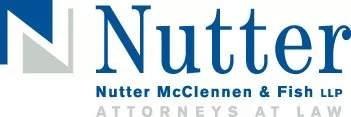In response to concerns about the stringency of unity of invention requirements, the Japanese Patent Office (JPO) released new examination guidelines on July 1, 2013, which expand the scope of claims that meet the unity of invention requirement and are therefore eligible for examination. The new guidelines provide for a less formalistic approach to assessing unity of invention and focus instead on the relation of a claim to the novel features of the invention. The guidelines will apply to applications filed on or after January 1, 2004, and will also affect examination of claims of an application filed on or after April 1, 2007, that have been amended in response to an Office Action.
Under both the old and the new guidelines, the JPO searches sequentially through the claims for a "special technical feature" (STF), which is a feature not found in, or obvious in view of, the prior art. The STF defines the "general inventive concept" and is the basis for determining whether or not the claims satisfy the unity of invention requirement and are therefore eligible for examination. Claims that are amended during prosecution to change the STF, by a so-called "shift amendment," are considered not to meet the unity of invention requirement and will be rejected.
Under the old guidelines, only claims having all of the features of the first claim in which the STF is found were considered to meet the unity of invention requirement. In addition, if the first claim to have the STF was a dependent claim, then only the claims from which that claim depends would be examined. As a result of this practice, even subsequent claims which had the STF would not be examined if they did not have every feature of the first claim to have the STF, and irrelevant or unwanted features had to be incorporated into claims to avoid shift amendment rejections.
The new guidelines relax the rules for unity of invention and shift amendments. As before, any claims from which the first STF-containing claim depends will be examined. Now, however, claims that satisfy the unity of invention requirement also include any claim having "the same or corresponding" STF, where a "corresponding STF" is one that solves the same problem of the claimed invention. Also, any claim that depends from the base claim of the first claim found to have the STF will be examined unless it is irrelevant to the problem addressed by the base claim. For example, if claim 3 is the first claim found to have the STF, and claim 3 depends from claim 1, then any claim depending from claim 1 meets the unity of invention requirement and will be examined unless it is irrelevant to the problem solved by claim 1. The same rules apply to claims that have been amended in response to an Office Action.
Accordingly, the STF no longer needs to be included in every claim that depends from claim 1 in order to meet the unity of invention requirement. As before, applicants should still conduct a prior art search to determine what the STF will be and should include the STF in the first claim. Under the new guidelines, however, there is even more reason to make as many claims dependent on claim 1 as possible. Also, to avoid shift amendment rejections for features that might not seem relevant to claim 1, applicants should explain in the response why the added features are relevant to the problem solved by claim 1.
This update is for information purposes only and should not be construed as legal advice on any specific facts or circumstances. Under the rules of the Supreme Judicial Court of Massachusetts, this material may be considered as advertising.

